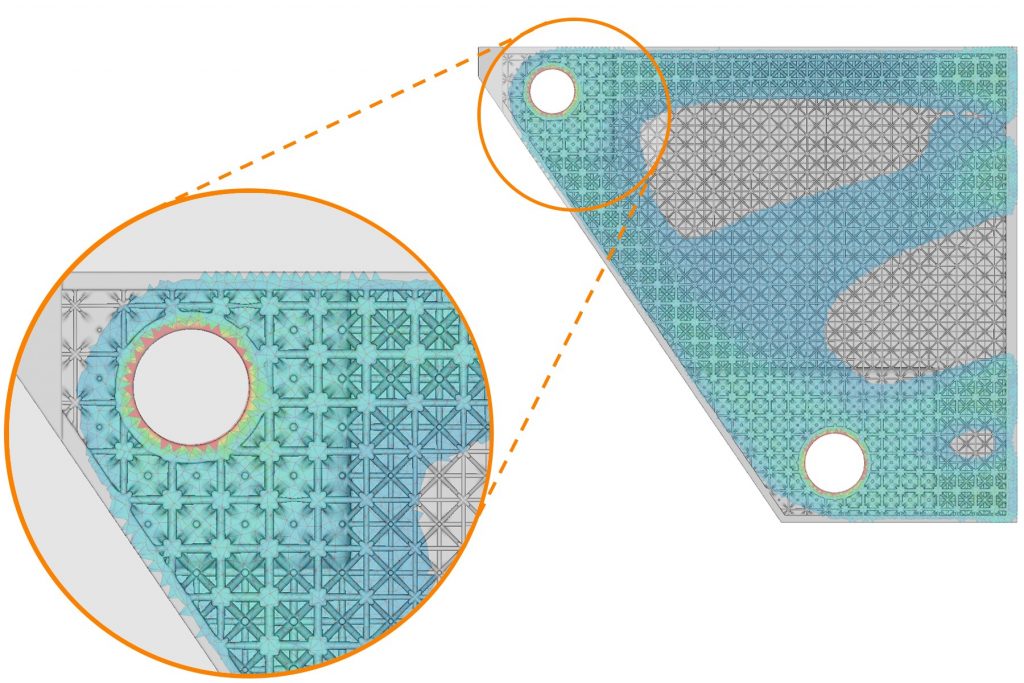3D printing software startup nTopology has announced that it has received an investment from In-Q-Tel, the investment arm of the Central Intelligence Agency (CIA). Though the amount invested in the firm has not been disclosed, the company has received at least $31 million total from various investors since it was founded in 2015.
nTopology has developed a unique software platform for advanced manufacturing dubbed nTop that uses a combination of generative design and workflow management and production prep to overcome the issues found with traditional CAD software. Venture capital firm Canaan has facilitated funding rounds that resulted in the aforementioned $31 million while nTopology has picked up a number of powerful customers in the process, including Lockheed Martin, the U.S. Department of Defense, Disney and Daimler. Former Autodesk CEO Carl Bass even joined the startup’s board of directors.
Given the military clients just listed, it’s no surprise then that In-Q-Tel, founded in 1999 to give the CIA research and development leverage in Silicon Valley, would be interested in nTopology, as well. As is the case with just about all In-Q-Tel investments, the exact nature of the investment is not disclosed to the public, including the amount, what the intelligence community’s (IC’s) interest in the technology is, or what stake the CIA now has in the startup.
From our previous coverage of In-Q-Tel, we learned that average investment ranges between $500,000 to $3 million, which gives the intelligence funding equity in the company and an advisory role on the startup’s board. In turn, In-Q-Tel can potentially guide product development and learn of any news before the public does.
nTopology’s announcement does reveal that the startup will be working with In-Q-Tel’s “partners” and “affiliates” but does not indicate whether that means other firms invested in by the VC arm of the IC or just general associates of the IC at large.
Within the In-Q-Tel portfolio, two of the most notable startups that IC VC firm funded were KeyHole Inc, which went on to serve the basis for Google Earth, as well as Palantir, the Peter Thiel-founded company that links intelligence databases and was under fire for its role in deportations Immigration and Customs Enforcement (ICE) Agency. In two cases, startups funded by In-Q-Tel were involved in questionable activities, including NSA domestic surveillance and a possible pump-and-dump scheme.
Outside of its investment portfolio, these partners can be even more diverse. Those who have followed the exploits of the U.S. IC know that this can range from your standard defense contractor to Nicaraguan Contras, the Afghan mujahideen and one of U.S. history’s most notorious banks.
This isn’t the first 3D printing-related startup that In-Q-Tel has invested in, which now includes Voxel8, Arevo, Fuel3D and Markforged. What it wants with any of those firms is anyone’s guess, but we hypothesize on the possibilities in the links embedded in the previous sentence.
nTopology’s technology is a part of an important trend in 3D printing that makes it possible to optimize designs and workflows for a technology for which traditional CAD software was not designed. Currently, we are seeing a number of software developments occur in this space that seek to make advanced manufacturing with these tools possible.
Autodesk may have begun this process through the acquisition of Netfabb (under Carl Bass’s leadership), giving the CAD giant a tool for design optimization for 3D printing. After first being integrated into Siemens’ CAD software, Frustrum’s generative design kernel for additive manufacturing (AM) soon caught the eye of another publicly traded CAD leader, PTC, who decided to acquire the startup. Meanwhile, ANSYS has purchased 3DSIM, which falls less on the side of generative design and more on the side of quality control and design simulation. However, ANSYS also partners with nTopology, which signifies the simulation software giant’s overall interest in the AM space.
As CAD software becomes better adept at designing for 3D printing, thanks to tools like those from nTopology, we will likely see the use of AM for production really hit its stride. For the industrialized world overall, that means more geometrically complex items that have been optimized for performance. For the IC, we can only try to fathom what that means.
Subscribe to Our Email Newsletter
Stay up-to-date on all the latest news from the 3D printing industry and receive information and offers from third party vendors.
Print Services
Upload your 3D Models and get them printed quickly and efficiently.
You May Also Like
Consolidation in AM: How 2025 Is Shaping the Industry’s New Normal
The first half of 2025 has been marked by a clear shift in the additive manufacturing (AM) industry. Companies are no longer just focused on developing new tech by themselves....
Etsy Design Rule Change Reduces Selection of 3D Printed Goods
Online marketplace Etsy has implemented a rule change requiring all 3D printed goods on the site to be original designs. The update to the site’s Creativity Standards states, ¨Items produced using...
U.S. Congress Calls Out 3D Printing in Proposal for Commercial Reserve Manufacturing Network
Last week, the U.S. House of Representatives’ Appropriations Committee moved the FY 2026 defense bill forward to the House floor. Included in the legislation is a $131 million proposal for...
Transforming From Tourist to Native: Duro CEO Michael Corr Explains Why the Company Rebuilt its PLM Software on AI
In these early innings of the AI boom, many market analysts have expressed concern that AI spend has gotten too far ahead of the technology’s proven ability to deliver significant...



































